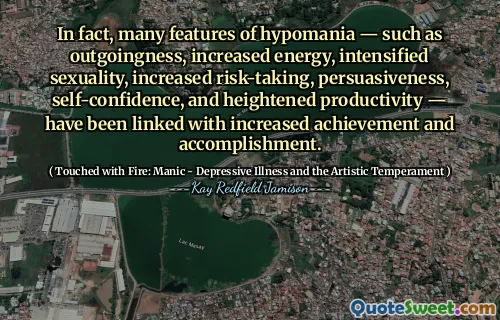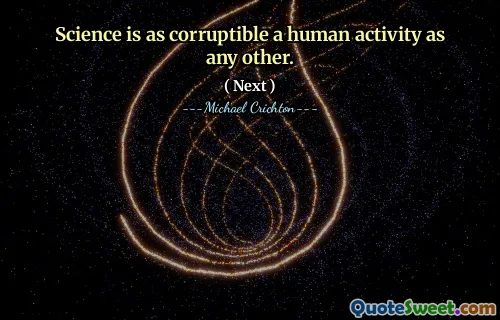
In fact, many features of hypomania — such as outgoingness, increased energy, intensified sexuality, increased risk-taking, persuasiveness, self-confidence, and heightened productivity — have been linked with increased achievement and accomplishment.
This quote from Kay Redfield Jamison's 'Touched with Fire' highlights the complex relationship between hypomanic traits and human achievement. The traits associated with hypomania—such as enhanced outgoingness, energetic drive, and confidence—are often viewed through a dual lens. On one hand, these characteristics can propel individuals toward exceptional accomplishments, fostering creativity, innovation, and leadership. Historically, many brilliant minds and artists have exhibited hypomanic tendencies, suggesting that the heightened energy and risk-taking can serve as catalysts for groundbreaking work. On the other hand, these same traits carry the potential for reckless behavior, burnout, and the instability inherent in mood disorders. It is essential to acknowledge this delicate balance, recognizing that while hypomania can deliver a burst of productivity and achievement, it also requires careful management to prevent the potential downsides. This duality underscores the importance of understanding mental health in the context of creative and professional pursuits. Human achievement is often rooted in traits that border on the manic: boldness, risk tolerance, and expansive energy. The challenge is harnessing these qualities in a sustainable way that promotes success without leading to adverse consequences associated with unmoderated hypomanic episodes.


